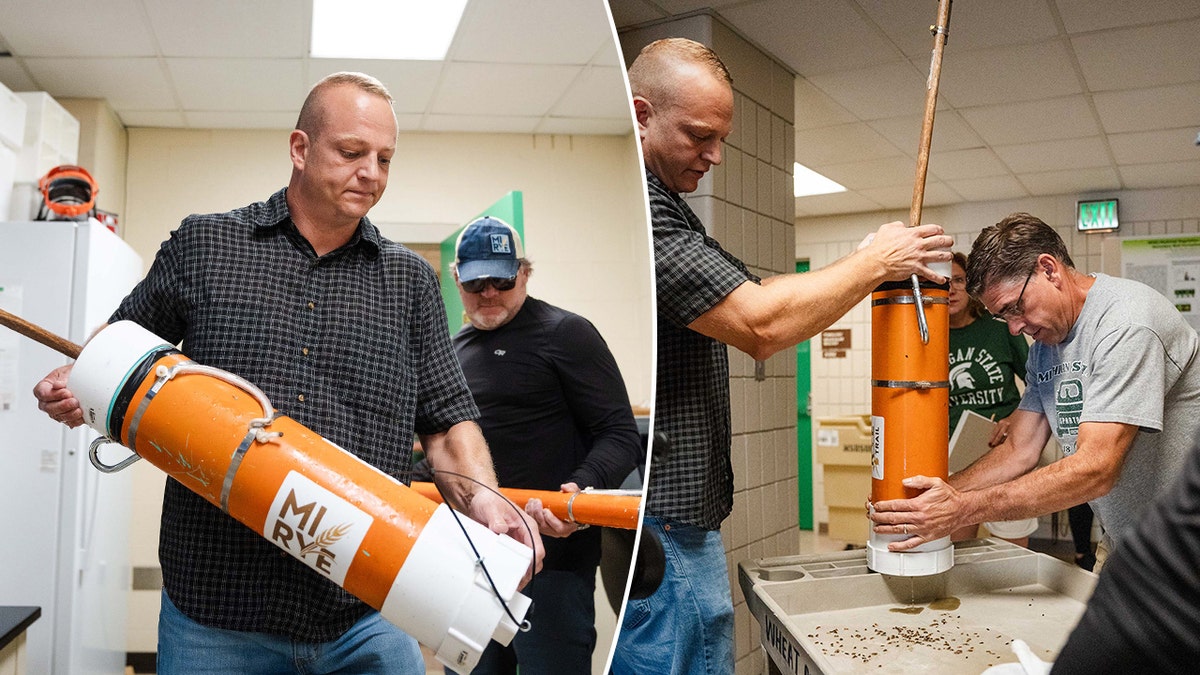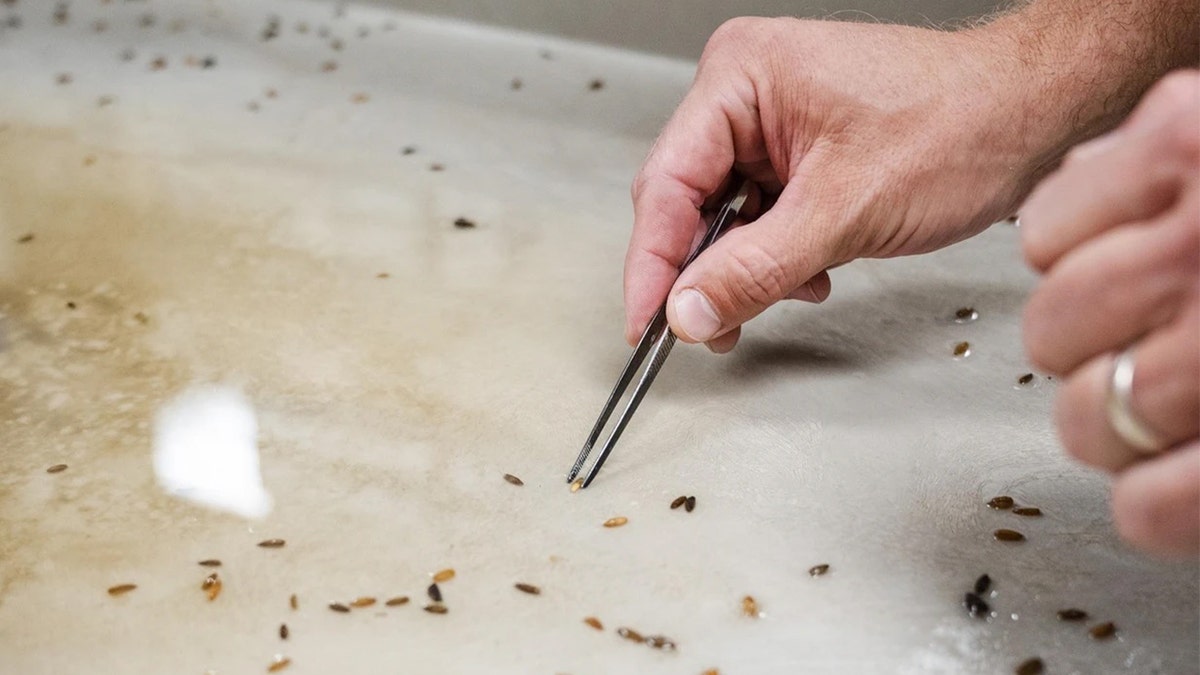Veteran-founded bourbon pays tribute to Army’s 250th anniversary
Four Branches Bourbon founders Rick Franco, Mike Trott, Harold Underdown, and R.J. Casey join ‘Fox & Friends First’ to share the story behind their veteran-owned brand and its special tribute to the Army’s 250th birthday.
Long before bourbon dominated the liquor market, rye whiskey reigned supreme.
Now, a Midwestern distiller is teaming up with scientists to bring back a long-gone type of grain and turn it into spicy, bold whiskey.
The source is a wooden schooner named the James R. Bentley that's been sitting in Lake Huron for nearly 150 years. The ship sank in Nov. 1878 after striking a shoal.
ANCIENT ROMANS' FAVORITE SAUCE REVEALS FISHY SECRETS AFTER 1,800 YEARS
Remarkably, all the crew members on the ship were rescued – and even more remarkably, the ship still contains the remnants of the rye it was shipping.
Chad Munger, founder and CEO of Mammoth Distilling, talked to Fox News Digital about his efforts to revive the grain, which he calls "Bentley rye."

Recovered rye kernels from an 1878 shipwreck are now part of an experimental revival effort that may result in bold, unique whiskey. (Nick Schrader / Michigan State University)
"The shipwreck itself is a rarity in the Great Lakes," Munger said. "It's privately owned by a gentleman [who] lives in Illinois who won a lawsuit ... which resulted in some new laws in the state of Michigan that preclude individuals from owning shipwrecks."
That legal quirk made the recovery possible.
ORDINARY ANCIENT ROMANS ATE 'LUXURY' MEAT AT FAST-FOOD SHOPS, NEW RESEARCH REVEALS
After Munger contacted the owner and obtained permission for a dive, his team retrieved samples of the 140-year-old rye from the ship's hold.
"It was a really rare set of circumstances that brought that all together in this particular case," Munger said.

Recovery operations took place in open waters above the Bentley wreck site in Lake Huron, seen here. (Garret Morgan / Michigan State University)
Mammoth Distilling is no stranger to this type of effort. It has helped revive another old type of grain, called Rosen rye.
Thanks to a U.S. Department of Agriculture seed bank in Idaho, the company obtained the seeds and germinated them back into existence.
Bentley rye, however, has been trickier to germinate. Eric Olson, a wheat breeding and genetics professor at Michigan State University, has been working to sequence the genome of the DNA.
STUDENTS COOK ANCIENT RICE DISH BASED ON 2,000-YEAR-OLD MANUSCRIPT WITH SURPRISINGLY HEALTHY RESULTS
Speaking to Fox News Digital on July 30, Olson called the Bentley rye variety a "historical treasure."
"It gives us a snapshot of the exact variety of rye being grown in the Great Lakes region in the late 1800s," he said.
"It's a tip of the spear in terms of a very, very large project to make rye better in the world."
Olson reported that the project has made some "foundational progress" over the past several months, including growing 269 varieties of rye.
"In the coming weeks, we will be extracting DNA and sequencing pieces of the chromosomes of the 269 rye varieties and then [comparing] them with the chromosomes of the Bentley rye variety," Olson detailed.

Scientists are using the genetic material of modern rye varieties to reconstruct the lost Bentley rye through traditional crossbreeding. Eric Olson, who is leading the research at Michigan State University, is pictured at left; Chad Munger, of Mammoth Distilling, is middle-left. (Jonah Brown / Michigan State University)
"Once we find the existing varieties with chromosomes matching those from the Bentley rye, we start the process of hybridizing these existing varieties (using classical plant-breeding methods) to bring all of the Bentley rye chromosomes back together."
Olson said the process will take between four and five years.
Of the effort, Munger said, "They're essentially Frankenstein-ing the thing back into existence."
"It’s a tip of the spear in terms of a very, very large project to make rye better in the world."
RARE AND MYSTERIOUS WHISKEY BOTTLES FOUND WASHED UP ON BEACH
Munger explained that the majority of whiskey made before Prohibition was rye whiskey, which must contain at least 51% rye grain.
"That's what everybody in the United States used to make whiskey," Munger said. "It was not bourbon."
He added, "Bourbon took over because it's cheaper to make."
"It's a much bigger story than just a cool shipwreck."
But, Munger said, good grain is like good wine grapes – and it makes a huge difference in the final product.
"The varieties of grain you use make a big difference in terms of the flavor character," he said.
"You can get a lot of grassy notes and clove spice notes and base spice notes, depending on what variety of grain you're using."
CLICK HERE TO SIGN UP FOR OUR LIFESTYLE NEWSLETTER
The project may also help the Great Lakes State become the top producer of rye again.
"One hundred and fifty years ago, Michigan was the rye-growing capital of North America," Munger said.

The rare grain, nicknamed Bentley rye, sat preserved underwater for more than 140 years. (Jonah Brown / Michigan State University)
"The state of Michigan is where you came to buy rye for whatever reason you were buying rye. As soon as Prohibition happened, it wiped out the whole industry."
For more Lifestyle articles, visit foxnews.com/lifestyle
He hopes that his project has the potential to help "reinvigorate a segment of the Michigan agricultural economy that's gone dormant and that really needs to be revived."
"It's a much bigger story than just a cool shipwreck," Munger emphasized.
CLICK HERE TO GET THE FOX NEWS APP
"It's really the first step in what we hope is a reinvigoration of a whole segment of the Michigan economy."






















